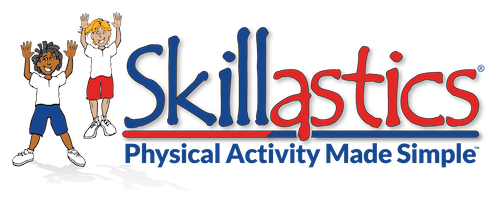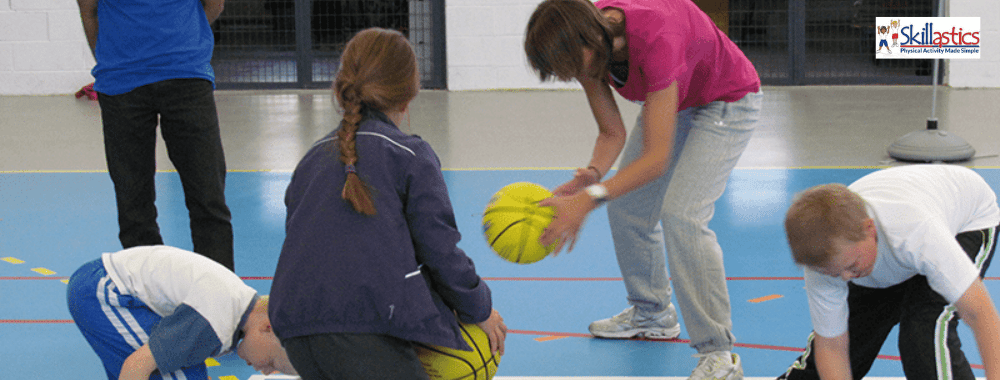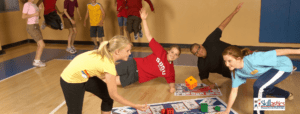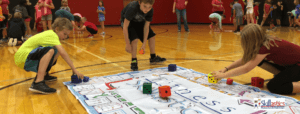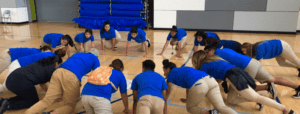There are a multitude of reasons why an After School program may have staffing limitations. As cold weather approaches in the winter months, staff levels may be affected by illnesses, transportation challenges, or even winter storms. Programs may also face budgetary limits, or simply have more students enrolled than in previous years. But even with limited staff or an off-kilter student-to-staff ratio, you can still boost your after school program with physical activities children will love. Here are five simple ways you can maximize participation no matter how limited your staff levels are.
1. Minimize Extra Equipment, Long Set-Up Times, and Fluff.
Choosing activities with a lot of equipment means locating equipment, setting it up, and storing it. Instead, choose activities with little or no equipment that takes minimal time to set up and allows for maximum participation. Our Skillastics® Activity Kits come with everything you need in one storage bag and can be set up in a minute, ensuring students are getting the most out of activity time.
2. Repurpose Remote Programs
As Covid began moving through the education community, teachers and instructors immediately evolved to redefine how we learn, and more importantly, how we teach. One of the ways Skillastics® transformed our educational offerings was through digital specialty programs, taught by experts. We could use these digital programs remotely, onsite, or in a hybrid scenario. For after school programs who are facing staff limitations, these programs are especially useful. Because they’re taught by experts in their field that are recorded and played back when it’s convenient for you, you don’t need to have those experts physically onsite. This gives you flexibility in staffing options because the staff you have on hand does not have to be trained in Martial Arts, Folklorico Dance, or Yoga for the children in your program to learn it! All you need to do is project the day’s lesson on a wall, whiteboard or screen. That’s it!
Implementation is fast and easy. Students follow along as they’re provided by the expert. This takes the pressure off staff to teach and frees them up to observe the students, keeping them on task.
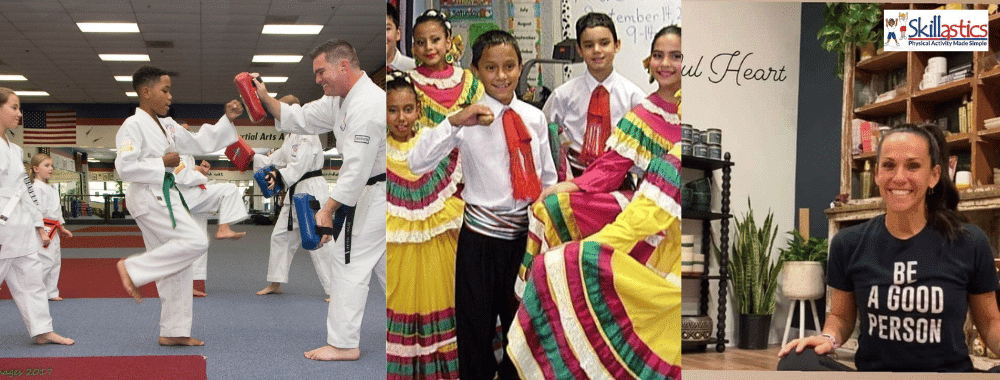
3. If Possible, Break Down Large Groups Into Rotations
Working with large groups of children can be difficult. Whether it’s ensuring everyone is participating, keeping chatter down so everyone can hear instructions, or ensuring the instructors are freed up to evaluate progress, handling everything at one time with a large group can be daunting.
If you have the capacity, divide a large group of children into 3 groups, rotating them from different rooms that include different activities. For example, one room may be concentrating on homework, another room is working on craft projects, and the other room or multi-purpose area is dedicated to physical activity. Breaking down a larger group and separating them into designated areas can also help them stay focused on the task at hand. This can also help reduce distractions from the other group rotations if they’re in a designated space.
Working with smaller amounts of children makes it so much easier for staff to be successful, but if you don’t have the capacity to break large groups into rotations, maintaining structure is key! Have your lesson plan, activity plan, or schedule set up ahead of time, and stick to it. Staying on track helps ensure kids are engaged so they don’t miss out on an activity – especially if that activity may change in the next time block. Maintaining structured time or time blocking also helps prevent a lull or disengagement when an activity should have ended but is allowed to drag on.
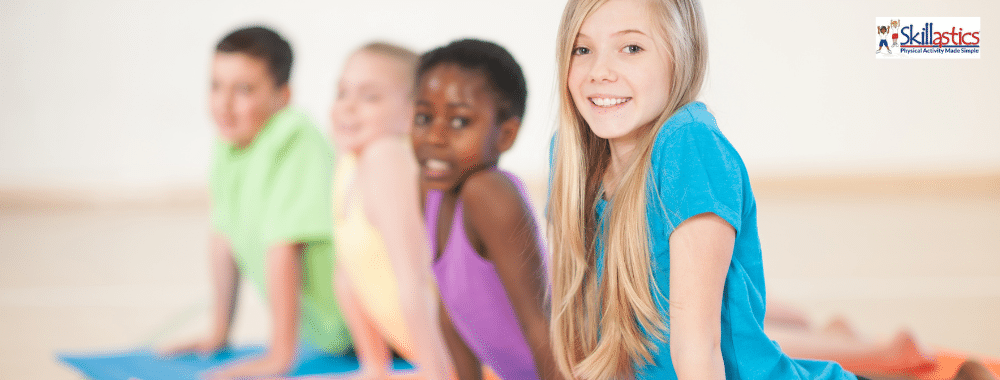
4. Keep It Organized
Maintaining an organized work and play space goes a long way when it comes to boosting your program, no matter what your staffing situation is. Having set locations for physical activities, and designated physical activity storage locations helps reduce time spent looking for resources and coordinating equipment.
Require that students clean up after themselves and maintain their personal space after playing or crafting. This helps them learn personal responsibility but also reduces the amount of time instructors and directors spend cleaning up after children.
An organized space also helps make sure you have adequate space for an activity, and helps you have a safer environment. If a space is cluttered or supplies aren’t organized, students could trip or fall, or not be as physically active as they would if they had more space to play.
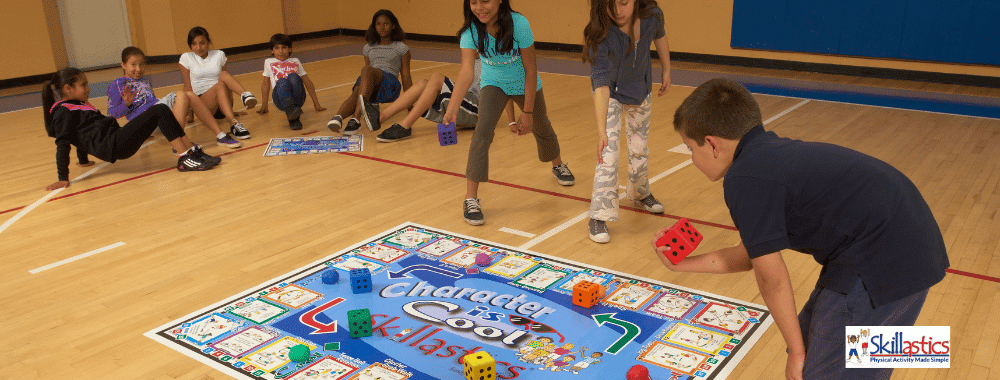
5. Keep A Positive Attitude
No matter what the underlying reason is for staffing limitations, students look forward to a healthy, active after school program. After a long day in the classroom, they’re looking for a friendly face and words of encouragement. Focus on encouraging positive behavior and attitudes, and joining in activities when possible to help model positive behavior even if their favorite staff member isn’t on hand.
Facing staff limitations is never ideal, but with a few key actions, you can minimize the effects on both your programs and the students in it. Using ready-to-go programs, rearranging groups and rotating activities where possible, keeping an organized space, and maintaining a positive, encouraging attitude can give your after school program the infusion it needs until your staffing issues are resolved.
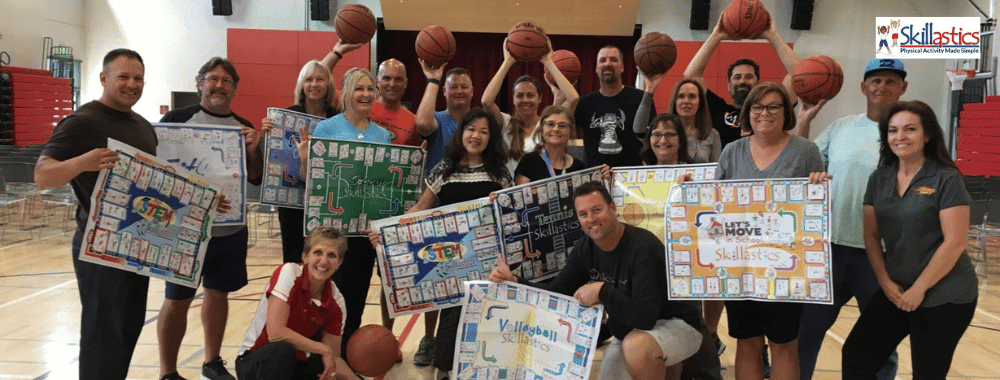
Related Skillastics® Resources:
